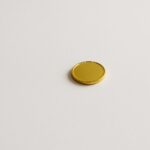
Custom clothing has become a powerful means of expressing confidence and fostering team unity. It reflects identity, develops team spirit, and showcases creativity both on and off the field. Custom clothing extends far beyond traditional sportswear — it’s now widely used for corporate branding as well.
A customized jersey represents strength, durability, and quality. With advances in digital printing technology, personalization options have become more accessible and sustainable. Many companies offer a range of customization options to keep customers satisfied. It’s now easy to explore different fabric types, printing methods, and styles. The quality of materials and comfort-enhancing features are more important than ever.
Creating quality custom clothing is a bold way to make a statement. Personalized items featuring names or numbers convey strength and identity. For sports teams, custom apparel creates unity and helps fans connect with players. Understanding the various design options and printing techniques is essential. Whether you’re outfitting a local team or an esports organization, a quality customized jersey is a popular choice.
Printing technologies continue to evolve, making it easier to bring bold designs to life. Modern sportswear represents an innovative approach to design and marketing. Familiarizing yourself with printing techniques and available options will help you select the most suitable solution.
Custom Jersey Shirts – More Than Just Team Uniforms
Custom apparel serves many purposes beyond its traditional use in sports. These jerseys offer exceptional quality, practicality, and comfort, while also serving as effective tools for branding and unity. Quality custom-printed apparel stands out by reflecting your values and identity. Custom jersey shirts have numerous advantages and applications. Here are some key benefits:
- Team Identity and Unity. Jerseys unite teams through shared colors, numbers, and logos, fostering a sense of unity among teammates. This helps players instantly recognize teammates while building cohesive team spirit and improving communication on the field.
- Marketing and Brand Promotion. Companies use custom sports jersey to capture attention and increase brand awareness. Brands integrate logos, slogans, and signature colors for instant recognition. This makes jerseys powerful marketing tools at events and in public spaces.
- Fan Engagement and Merchandise Sales. Sports teams generate significant revenue from jersey sales. Fans wear shirts featuring their favorite players or to commemorate historic matches. These shirts have become fashion items and collectibles embraced by fans and influencers alike.
- Personal Expression and Streetwear. Modern fashion increasingly blends sports aesthetics with casual clothing. Custom jersey shirts can feature unique designs, cultural references, and eye-catching graphics that make them stand out. Designers release limited editions that inspire and unite communities.
- Events and Identification. Charity races and marathons use custom shirts to identify participants and sponsors. This enhances safety, improves coordination, and increases brand visibility at events.
Custom Print Jersey – Understanding Your Printing Options
Choosing the correct printing method is crucial. It directly affects the quality, appearance, durability, and cost of your jersey. Understanding the unique advantages of each method is essential for making an informed choice.
Consider factors like design complexity, fabric type, and order quantity when making your decision. Choosing the right technique ensures your jerseys look great and meet your customization needs. Here are the key printing methods for custom print jerseys:
- Screen Printing. Ideal for large orders and wholesale production. Screen printing excels with bold, simple designs and delivers durable results. This method requires separate screens for each color. While perfect for bulk orders, complex multi-color designs can become expensive.
- Heat Transfer Vinyl (HTV). This technique uses vinyl material cut into specific patterns and heat-pressed onto jerseys. It works perfectly for names, numbers, and individual characters. Vinyl offers excellent clarity and precision. However, it’s better suited for smaller orders than large-scale production.
- Sublimation Printing. A custom print jersey can include sublimation printing, which uses ink into polyester fibers. This creates breathable, durable designs perfect for gradients and complex illustrations. The result is vibrant, photo-quality prints that won’t crack or peel. However, this method works only on light-colored polyester fabrics.
- Direct-to-Garment (DTG) Printing. DTG printing applies ink directly to fabric using specialized printers. This makes it ideal for small batches and detailed graphics with multiple colors. Durability depends on the quality of the ink and the proper use of washing methods. This technique works best on cotton-based garments.
Shirt Design Maker – Tools for Creating Your Vision
A shirt design maker is essential for creating unique, custom apparel. Modern tools simplify the design process, enabling you to visualize ideas effectively for both professionals and beginners.
Online platforms offer interactive design studios where you can create illustrations, adjust typography, and visualize designs in real-time. Professional software like Adobe Illustrator provides complete creative freedom for complex projects with advanced tools for detailed, professional-quality designs.
Mobile design apps provide on-the-go customization options. While more limited than desktop software, they’re perfect for quickly creating drafts and basic designs, with instant sharing capabilities.
AI-based design generators recommend color combinations, suggest layout structures, and assist with logo placement. These features accelerate idea generation and eliminate creative barriers for newcomers.
3D visualization tools let you preview designs from multiple angles. You can rotate the shirt to check seams, sleeves, and overall appearance before production, identifying potential issues early. A shirt design maker offers an excellent opportunity to create something unique and review the final look before committing to production.
Design Shirts – Key Principles for Effective Jersey Design
Effective design combines aesthetics, functionality, and brand identity. Understanding fundamental principles ensures your jersey is both visually appealing and functional. Here are essential considerations when you design shirts:
- Color Theory. Colors have a significant impact on emotions, visibility, and branding. Strategic color combinations improve on-field recognition and enhance visual appeal. Designers use contrasting colors for maximum visibility during gameplay. Consider your team’s colors, your opponent’s visibility, and how colors appear under various lighting conditions.
- Typography and Legibility. Fonts should be clear and easy to read from various distances and angles. Sports jerseys typically use bold fonts that ensure numbers and names remain visible during play. Numbers should feature bold outlines for enhanced visibility. Avoid decorative fonts that sacrifice readability for style.
- Logo Placement. Logos should be positioned for maximum visibility while maintaining aesthetic balance in your design shirts. Common placement areas include the chest, shoulders, and sleeves. Logo placement often follows sponsorship requirements while ensuring visual harmony with the overall design. Make sure logos don’t interfere with player movement or comfort.
- Fabric Compatibility. Select printing methods that are compatible with your chosen fabric. Dense ink coatings can reduce breathability on some fabrics, affecting athletic performance. Sublimation is most effective for lightweight, breathable athletic wear. Designers select methods that maintain both comfort and performance during intense activity.
- Consistency and Specifications. Teams require precise formatting across all jerseys for a professional appearance. Specifications for size, colors, and fabric must be clearly defined before production. Proper personalization ensures uniformity with consistent placement of all design elements. Functionality, safety, and comfort are paramount in the final product.
Creating Your Customized Jersey – Step-by-Step Process
Creating a quality customized jersey requires careful planning, material selection, and clear communication. Following a structured process ensures the best results. Here’s how to approach your custom jersey project:
- Define Your Goals and Audience. Begin by clearly defining your purpose and target audience. Are you creating jerseys for a competitive sports team, a corporate event, or fan merchandise? Understanding the context helps guide decisions about fabrics, colors, and graphics.
- Choose Materials and Fit. Select your primary material based on the intended use of the jersey. Athletic wear often utilizes moisture-wicking polyester for enhanced performance and comfort. Casual jerseys might use cotton or cotton blends. Fit options include loose, slim, and unisex cuts to accommodate different preferences and body types.
- Develop Artwork and Branding. Create mockups that clearly display logo placement and design elements. Use a shirt design maker or work with a designer to visualize your concept. Dimensional consistency is crucial for production accuracy. Your customized jersey should strike a balance between visual appeal, comfort, and functionality.
- Select Your Printing Technique. The printing technique you choose directly affects the final look, durability, and professionalism of your jerseys. Select a method that matches your budget, design complexity, and order quantity. Consider factors like turnaround time and the expertise required for each process.
- Review Digital Proofs. Before production begins, carefully review digital proofs to confirm color accuracy and design placement. Check that names, numbers, and logos are correctly positioned and sized. Proofreading at this stage prevents costly reprinting and ensures your final product meets expectations.
- Place Your Order. Once you’ve approved the design, place your order with clear specifications. Provide detailed information about sizes needed, delivery deadlines, and any special requirements. Effective communication with your manufacturer ensures a smooth production and delivery process.
By following these steps, you’ll create customized jerseys that look professional, feel comfortable, and effectively represent your team or brand.












